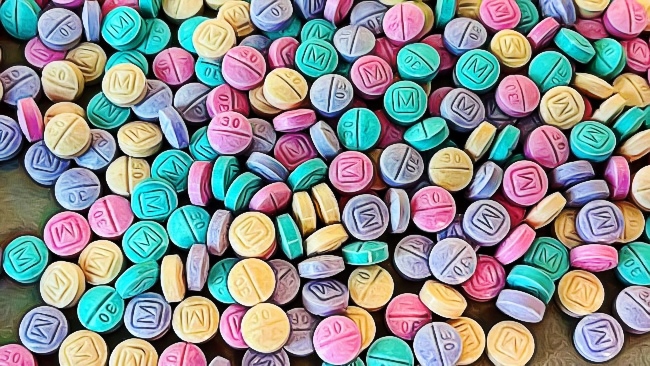Fentanyl is a notorious drug due to its potential for abuse and addiction. It’s a highly powerful yet dangerous substance that causes overdose and even death in many individuals. Its hazards are well-documented, yet it remains a prevalent illicit recreational drug throughout the United States today.
Fentanyl Addiction and Overdose
Because of the substance’s euphoric effects, it has become extremely popular in the illegal drug market. Trafficking usually happens on large scales through China and Mexico, and the opioids reach the US as well. Its small doses make it easier to transport, making it widely available in many countries. It’s an international epidemic that’s increasing at alarming rates.
Illicit users of this synthetic opioid can experience withdrawal symptoms that make it notoriously difficult to quit. Eventually, their bodies grow a tolerance to the drug and desire to take more of it to feel its effects. When this happens, they become at risk of an overdose.
A person who overdoses on fentanyl may experience severely slowed breathing, a dangerous reduction in heart rate, fainting, and even a coma. In many cases, these complications can be fatal. To prevent this from happening, it’s best to seek help from an addiction center right away if you or someone you know has developed an addiction to the substance.
Overdose Symptoms:
- Slow or shallow breathing
- Gray, blue or pale skin
- Blue or purple lips and nails
- Respiratory arrest
- Unresponsiveness
- Loss of consciousness
- Inability to speak or slurred speech
- Vomiting–choking or gurgling sounds
What Is Fentanyl?
Fentanyl is a synthetic drug that belongs in the opioid family, which includes morphine and OxyContin. Many manufacturers produce it in its tablet form, but it may also come in the form of sprays, patches, lozenges, or injections. Some common brand names of this substance include Abstral, Actiq, Duragesic, Lazanda, and Sublimaze.
This synthetic substance was first created in Belgium in 1959. Physician Paul Janssen and his team synthesized it under the label Janssen Pharmaceutical. They developed it by screening certain chemicals for opioid activity.
The drug became available for medical use in 1968 under the name Sublimaze, manufactured by McNeil Laboratories. Its original use was as a general anesthetic. Then, Janssen Pharmaceutical introduced the Duragesic patch in the mid-1990s. By 1998, a flavored lollipop with fentanyl citrate also rose under the name Actiq. It was the first fast-acting formation of the drug, helping people deal with chronic breakthrough pain.
What Is Fentanyl Used For?
Fentanyl belongs to the opioid family of drugs. Despite its dangerous nature, it has its medical applications, and doctors use it to treat severe pain. It’s especially prominent as a treatment for advanced cancer pain.
The transdermal patches used for chronic cancer pain slowly release fentanyl through the skin and transfer it to the bloodstream over 48 to 72 hours. It’s good for long-lasting pain management, and it reaches its full effect within 12 to 24 hours. Usually, doctors prescribe it with other fast-acting opioids like morphine or oxycodone.
Sometimes, medical experts use fentanyl injections as anesthesia. They administer it with a muscle relaxant and a sedative-hypnotic, such as propofol or thiopental. These anesthetics are given in intervals of 15 to 30 minutes throughout many medical procedures, such as surgeries or endoscopy. Doctors may also use them for patients in emergency rooms experiencing significant pain.
How Potent Is Fentanyl?
This powerful substance is highly potent—it is approximately 50 times stronger than heroin and 100 times stronger than morphine when it comes to potency. Moreover, the central nervous system readily absorbs this substance. It beats morphine in almost every category, and unfortunately, this includes its potential for abuse.
Intravenous fentanyl works within one minute of injection and reaches peak efficacy at around three minutes. Compared to morphine, it’s much faster, as morphine takes effect at around five minutes and peaks after ten minutes. However, fentanyl wears off more quickly and lasts for a maximum of around 45 minutes.
Much like other opioids, this drug enters the system and quickly crosses the blood-brain barrier. It binds with the central nervous system’s opioid receptors, which leads to feelings of numbness and euphoria. Because it binds much more quickly with the opioid receptors, it’s a more potent substance than most other opioids. To illustrate its potency, it is often measured in micrograms rather than milligrams like other substances of its kind.
Is Fentanyl a Dangerous Substance?
Although fentanyl is remarkably effective for managing pain in many types of patients, the sheer potency of this drug is also what makes it so dangerous. This substance has a very high potential for abuse and addiction, and illicit use and manufacturing of this product have become increasingly prevalent.
Illicitly manufactured versions of the drug are popular in the illegal drug market because the extreme potency leads people to experience heroin-like effects. They enter a euphoric state and get a quick and intense high. However, overdose is likely.

According to the Centers for Disease Control and Prevention (CDC), synthetic opioids like fentanyl are responsible for almost 73% or ¾ of all opioid-involved deaths in 2019. In large enough amounts, its analgesic functions can impair the nervous system so much that it causes the lungs to fail.
Even seemingly small doses of fentanyl can cause a person’s breathing to stop, eventually leading to death. More than 300 micrograms of the substance can be fatal—that’s equal to 0.3 milligrams. It is potent enough that first responders and law officers are advised to wear protective clothing during raids and emergencies to prevent accidental skin absorption and inhalation.
What Are the Risks and Side Effects of Fentanyl?
Many people who abuse this synthetic substance experience intense euphoria, but this state of bliss comes at a price. They also have an extremely high risk of experiencing the drug’s numerous side effects. Some of its adverse effects include:
- Heartburn
- Drowsiness
- Stomach pain
- Dry mouth
- Reddening of the face, neck, or chest
- Uncontrollable shaking
- Back or chest pain
- Difficulty urinating
- Unusual thinking and dreams
- Swelling extremities
- Anxiety
- Depression
- Irregular menstruations
Some of the substance’s more serious side effects include:
- Confusion, agitation, and hallucinations (seeing, hearing, smelling, or feeling things that do not exist)
- Seizures
- Rashes, itching, or hives
- Nausea, vomiting, or diarrhea
- Difficulty breathing or swallowing
- Extreme drowsiness
- Fainting
- Clammy skin
- Pinpoint pupils
- Changes in heartbeat
- Coma
If you experience any of the signs and symptoms above, it’s best to contact a healthcare professional right away.
How Long Does Fentanyl Stay in the Body?
How long fentanyl takes effect in the body depends on the method of administration. While injections can take only about a minute to work, patches may not provide pain relief for as long as 24 hours. However, regardless of the mode of delivery, the substance is long-lasting and can be present in the body for up to several days or even a week. Traces of the drug can be detectable in the blood, urine, and hair.
Interactions with Alcohol
Much like other types of drugs, fentanyl’s effects may have interactions with alcohol. Both this synthetic opioid and alcohol slow down the central nervous system’s processes, so the combination of the two can have life-threatening consequences. A person who consumes both fentanyl and alcohol is at a much higher risk of having an overdose and dying from it.
Conclusion
Fentanyl is a highly potent and dangerous drug that belongs to the opioid family. It’s 100 times more powerful than morphine, and it’s an addictive substance that has fatal consequences. Addiction to it is becoming more prevalent, but seeking help can mitigate its devastating effects. If you or a loved one is dealing with substance abuse, get the help you need today.
Sources:
https://www.cdc.gov/drugoverdose/deaths/synthetic/index.html
















